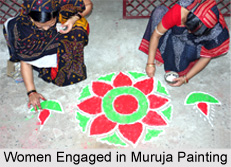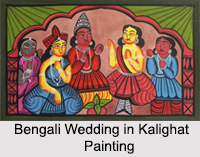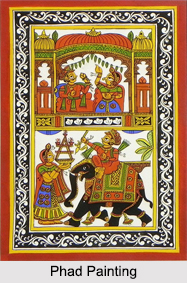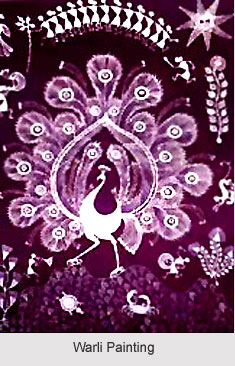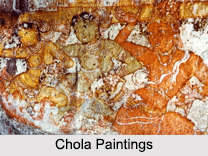 Chola Paintings of South Indian have very high significance in the history of art. These paintings have great emotion in the faces, whether it is anger, compassion or any other expression. The era of the royal Cholas was an era of continuous development and enhancement of Dravidian art and architecture. They utilised their extraordinary wealth which were earned during their widespread invasions in building long-lasting stone temples and beautiful bronze sculptures.
Chola Paintings of South Indian have very high significance in the history of art. These paintings have great emotion in the faces, whether it is anger, compassion or any other expression. The era of the royal Cholas was an era of continuous development and enhancement of Dravidian art and architecture. They utilised their extraordinary wealth which were earned during their widespread invasions in building long-lasting stone temples and beautiful bronze sculptures.
Features of Chola Paintings of South India
The murals of the Chola age bring out diverse emotions on many faces, a feature rarely seen in Indian art. The majestic temple of Brihadishvara in Thanjavur is an example of the great wealth and power of the Chola Empire. The art of paintings boomed, Figures were painted with realism. The ability of the Chola painters is seen on their paintings. Most the paintings are massive and animated, which brings alive the greatness of the Lord who destroys evil and ensures peace. These paintings also depict a barely visible Dakshinamurthi (Shiva as God of knowledge) beneath a banyan tree on which monkeys are playing. The paintings of the Chola period have a stillness of body and astonishment on the faces of the sages worshipping Dakshinamurthi, in contrast to the energetic animals portrayed nearby. There are also flying apsaras and gandharas, who complete the scene of extravagant proportions. The paintings of Lord Shiva can be seen in the heart of the temple, which are protected by gigantic walls of stone. Here, a forceful Shiva is shown as warrior on a chariot, which is being driven by Brahma and fighting the demons who can be clearly recognised by their fearful appearance.
There is another Chola painting of South India, which shows a beautiful tableau of Rajaraja Chola I listening to his preceptor Karuvur Devar and the two are facing a study of intense concentration. This is said to be one of the earliest royal portraits in Indian painting. In another panel, there are dancing apsaras and their faces are in the pose of abhinaya. Again, in the paintings are shown Rajaraja Chola and his wives watching in awe the magnificent ananda tandava, the dance of Nataraja performed in the golden mandapam of Chidambaram. There are also people with eyebrows like a bow and the compassionate eyes, who are shown wearing beautiful jewellery and jasmine bedecked hairstyles. These beautifully featured people bring alive the massive compositions in bright colours. Most of the Chola paintings were rediscovered when the upper layer was removed to be preserved separately. Rajaraja-I and Rajendra contributed most for the growth of the art of painting throughout the Chola period. The big Chola king Raja Raja I built the Brihadisvara temple between AD 1000 and AD 1008 and the paintings were done between AD 1008 and AD 1012.

